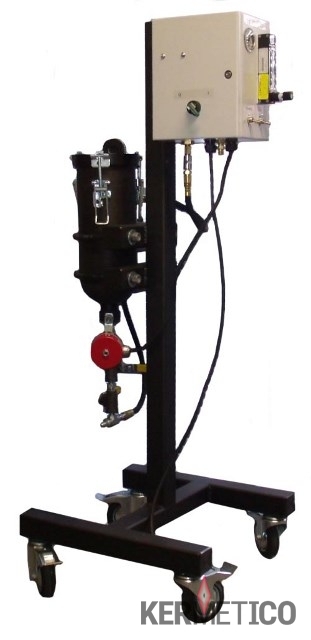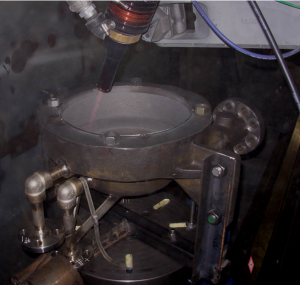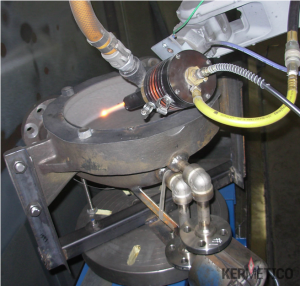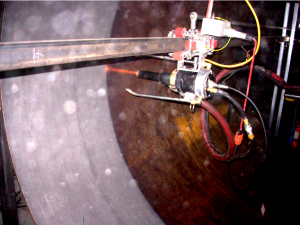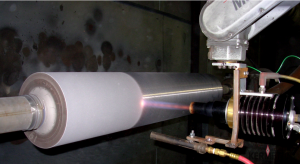Kermetico Hot Blasting Equipment For Surface Cleaning And Preparation For Thermal Spray Coatings
We have designed our hot blasting equipment to prepare high-quality clean metal surfaces minimizing the time and grit blasting media consumed.
Hot Grit Blasting vs. Traditional Sandblasting
Surface Quality
The bond strength of a coating is critical for thermal spray applications.
The bond strength is dependent on the type of coating material, substrate surface preparation and spray parameters.
While spray parameters are optimized carefully, most surface preparation is done by manual grit blasting, with little or no calibration of blast parameters and unpredictable operation cycle time and quality.
Blasting is highly dependent on operator skill and often surface finish is only assessed visually, which means that a consistent, reproducible surface profile cannot be guaranteed.
Moving a workpiece from a blasting room to the spray shop carries the risk of oxidation or contamination of the blasted surface.
HVAF hot grit blasting, in contrast, is fully automated and provides predictable, high-quality results. Thermal spray coating is executed immediately after blasting, which minimizes the risk of oxidation.
Safety Of Blasting Operations
OSHA warns that workers involved with abrasive blasting may be exposed to dust and toxic metals, putting them at risk for lung damage.
Properly organized HVAF blasting is fully automated and free of any health hazards.
The HVAF Warm Blasting Surface Preparation Process
When using HVAF systems for grit blasting, grit particles are accelerated to an extremely high velocity and simultaneously heated to over 1,200oC (2,200oF), dramatically improving the cleaning and profiling efficiency of the process.
Surface preparation by HVAF grit blasting increases the production rate 10-fold with a 100-fold reduction of grit consumption compared to conventional grit blasting with compressed air. The same setup is used for blasting and thermal spray coating using the same gun that results in further reductions of time for the thermal spray coating job.
HVAF blasting is also an efficient tool for hard coating stripping.
The HVAF High-Pressure Blast Feeder
| Description | specification |
|---|---|
| Power | 110 or 220 VAC, single phase |
| Typical grit used | Aluminum Oxide, Silicon Carbide, Tungsten Carbide |
| Grit particle size | From #220 to #24 mesh |
| Grit consumption | 1-8 kg/hour |
| Hot blasting rate | 5-20 m2/ hour |
An HVAF Hot Blasting Story
Once upon a time we had a customer request that we apply and arc aluminum coating to the exterior surface of a lot of pipe spools, as we were geographically located in a desirable place given the path that the spools had to take from the manufacturer (our customer) to their final destination (a local refinery.)
We accepted the job and bought an arc gun to do it.
The job was large enough to pay for the arc gun even if we never used it again, and we haven’t.
Our parking lot was filled with pipe spools.
We had to perform the usual qualification testing including a bond test.
For the ASTM 633C bond test, we happened to have one of our HVAF guns set up for blasting, so we blasted the slugs with our HVAF gun and sprayed them with our brand-new arc gun.
The result was a bond strength of over 6,000 lbs. and the coating failed within its’ structure which shows that the actual bond was even higher.
The best we have ever seen for arc aluminum bond strength before this was about 3,500 PSI with a bond failure in most cases.
So, for some reason, HVAF blasting results in a higher bond strength than conventional air blasting

